Heritage In Focus: 001
In this launch issue, discover Anglo-Saxon glass-carving at the birthplace of Bede, the first peatland World Heritage Site, accessibility at Grade I-listed Calverley Old Hall and other web weavings...
Feature Story: Calverley Old Hall, Leeds
This month, we were invited by friends from the Landmark Trust to the reopening of Calverley Old Hall, a nearly 1,000-year-old manor near Pudsey, North Leeds. Once one of England’s most at-risk buildings, this Grade I-listed medieval house has been transformed into a highly accessible holiday let.
Phil Chambers, as the accessibility consultant, played a central role in the project, with his building access guide showcased during the open day (see photo gallery below). Phil recommended subtle yet impactful changes, including a lift, level-access bedroom and bathroom, in addition to a fully accessible kitchen designed for wheelchair users and to enable best possible access for all other visitors (*The Landmark Trust, 2024).
“What’s most important is understanding the full spectrum of experiences a site can offer and communicating them effectively. The goal isn't for everyone to have the same experience, but for everyone to enjoy an experience of equal quality.”
- Phil Chambers, Countryside for All Good Practice Guide
Despite common misconceptions, Grade I-listed buildings like Calverley Old Hall, which comprise just 2.5% of listed buildings in England (Historic England, 2024), can be adapted, rather than altered, for improved accessibility. Modifications to the existing structure, such as ramps, sliding doors, and tactile guides enhance inclusivity while maintaining a building’s historical integrity (IHBC, 2021).
Ensuring diversity and inclusion in heritage buildings is a moral imperative. Accessible spaces should welcome everyone, including those with mobility or sensory challenges, older adults with unique needs, and parents with pushchairs. The principle of Least Restrictive Access (LRA), which originated in the United States under the Individuals with Disabilities Education Act (IDEA) in 1975 and is embedded in key UK legislation such as the Equality Act 2010 and the Human Rights Act 1998, requires heritage sites to minimise barriers and create inclusive environments (Sensory Trust, 2020).
Other accessibility advocates, including Blue Badge Style (2021), continue to push for more inclusive listed buildings, emphasising that exemptions are often used by businesses to avoid necessary improvements. Similarly, guidance from English Heritage (2023) states that it is rarely the case that improvements to accessibility cannot be achieved at all.
If accessibility in listed buildings is both feasible and reasonable, what is delaying progress? A major barrier is that equality laws do not always take precedence over building regulations; Another is that many building managers do not fully understand how much flexibility exists in the regulations or may assume that listing status strictly limits the scope of possible adaptations. Other factors, like the costs associated with careful restoration, or simply undervaluing the importance of inclusion, can contribute to accessibility being overlooked.
Case in point: In 2020-21, Phil challenged one of his favourite local pubs over a narrow entrance that was inaccessible for pushchairs, wheelchairs, and walking aids. Despite the venues overall appeal (and Sunday lunch menu!), management repeatedly ignored the issue until mounting complaints forced action.
Ultimately, the renovation work at Calverley Old Hall demonstrates that balancing conservation and accessibility is achievable. Without thoughtful planning, creativity, and adequate support, however, accessibility in listed buildings will remain inconsistent.
*Physical copy of the guide: The Landmark Trust (2024) Calverley Old Hall, The Story of a Medieval Manor House, p.28.
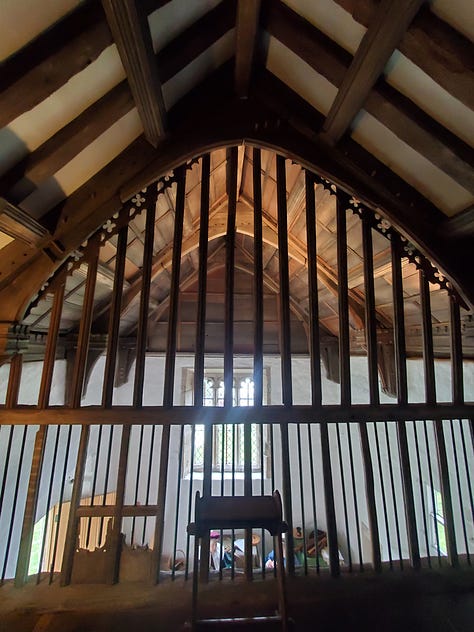
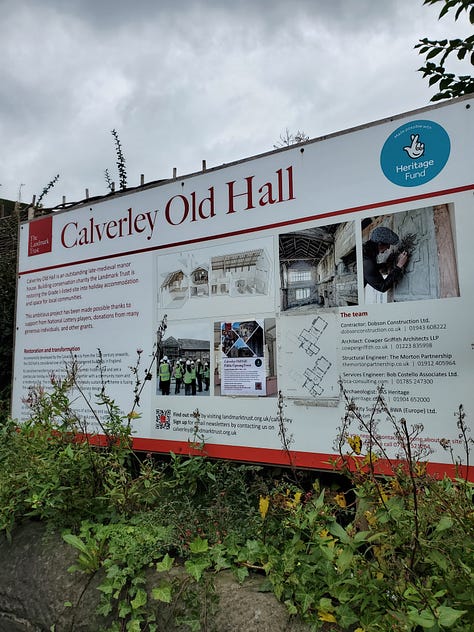
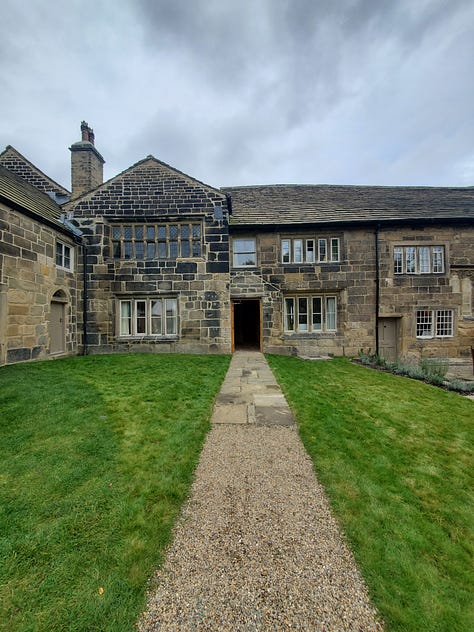
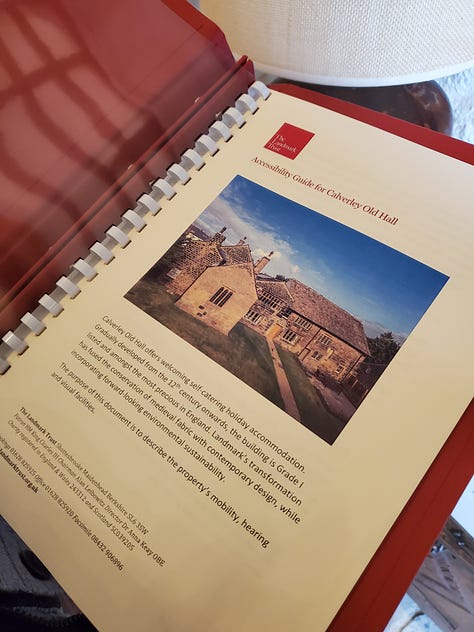
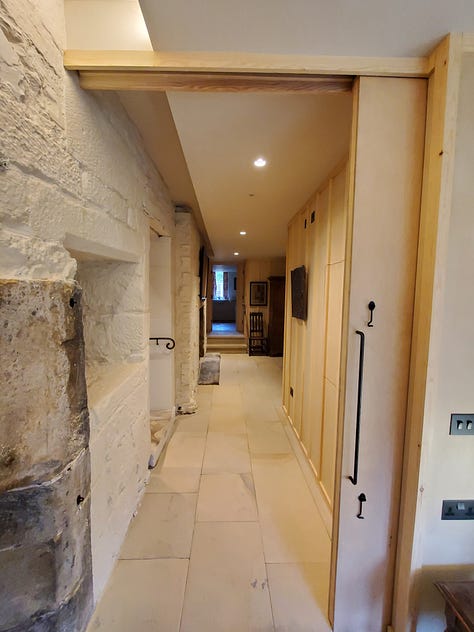
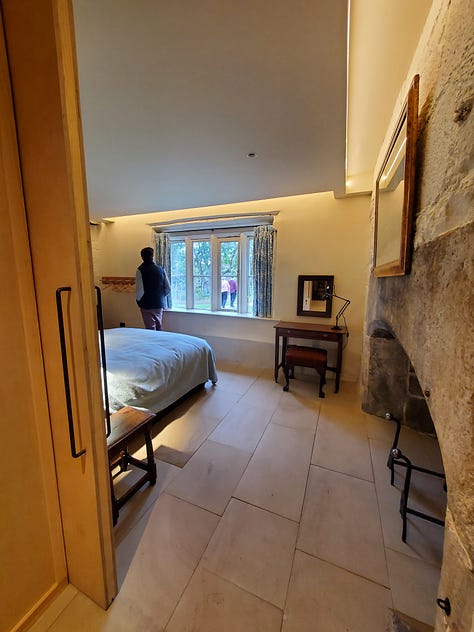
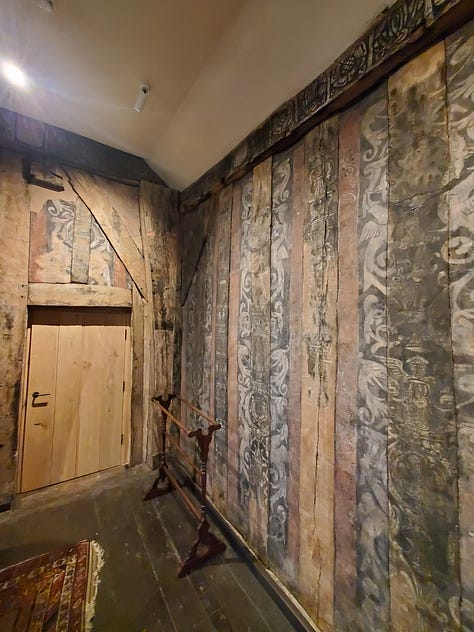
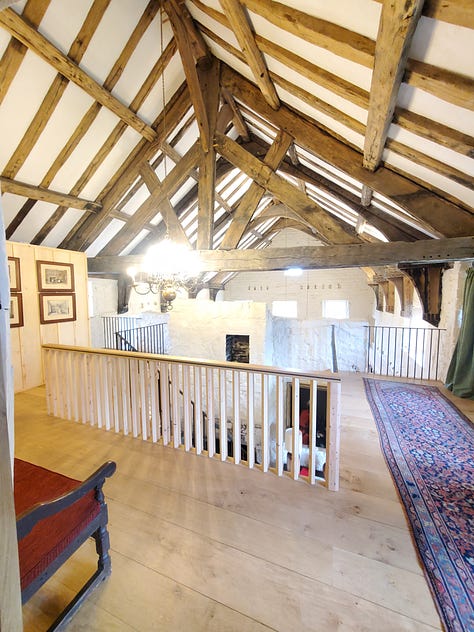
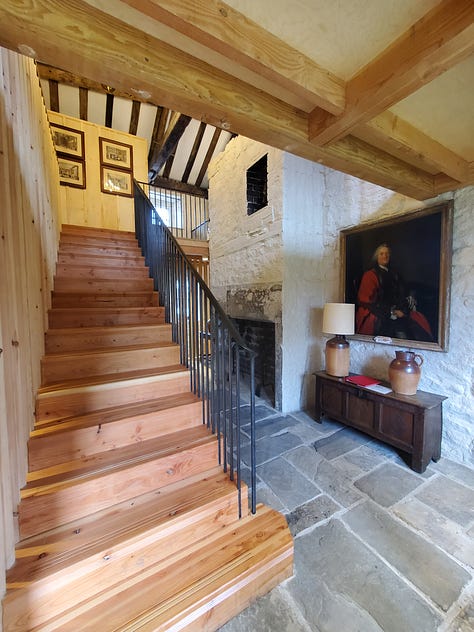
Spotlight: Anglo-Saxon Glass Carving at Jarrow Hall, Northumberland, North East England.
We recently attended a hands-on workshop in glass window making at Jarrow Hall in Jarrow, Northumberland, birthplace of The Venerable Bede. With expert guidance from renowned local artist, Chris Dalton, and all materials provided by Arts Council England, we got stuck into glass polishing and cutting, using similar methods as stained glass artists of the past. We created some ‘simple’ designs (shown below) that will be featured in a stained glass exhibit at Jarrow Hall later this month.
Such free workshops are a perfect example of how collaborating with local organisations and enthusiastic experts through strategic partnerships, can help bring in participants who may never otherwise engage with heritage crafts. The Anglo-Saxon village, farm and Bede museum are also well-worth a visit.
Tip: take a pair of thin gloves - tiny shards of glass can be painful and hard to spot!
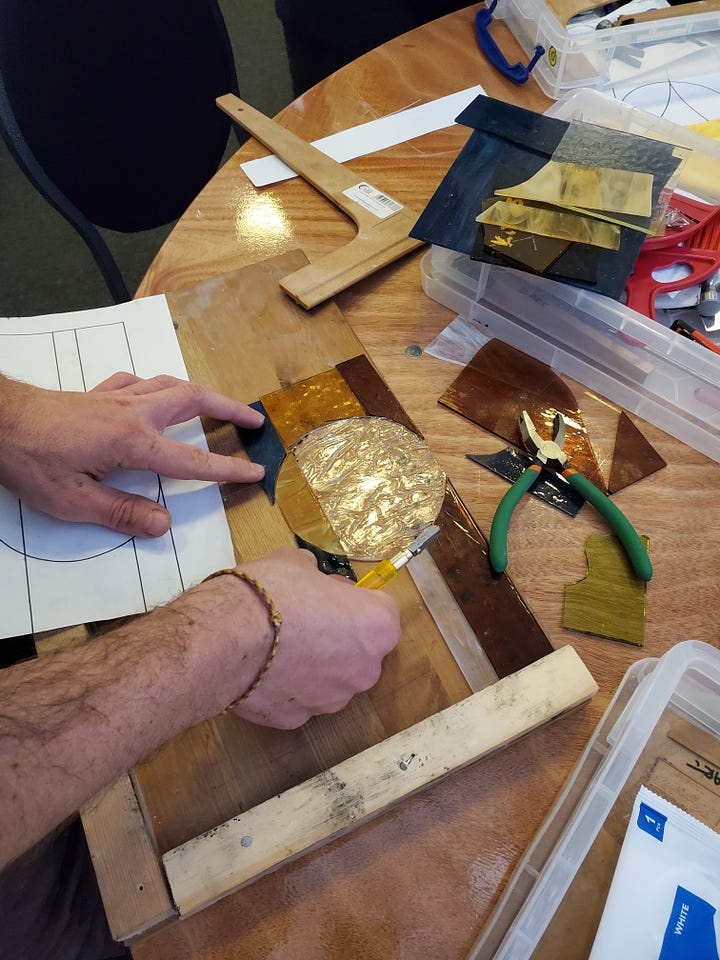
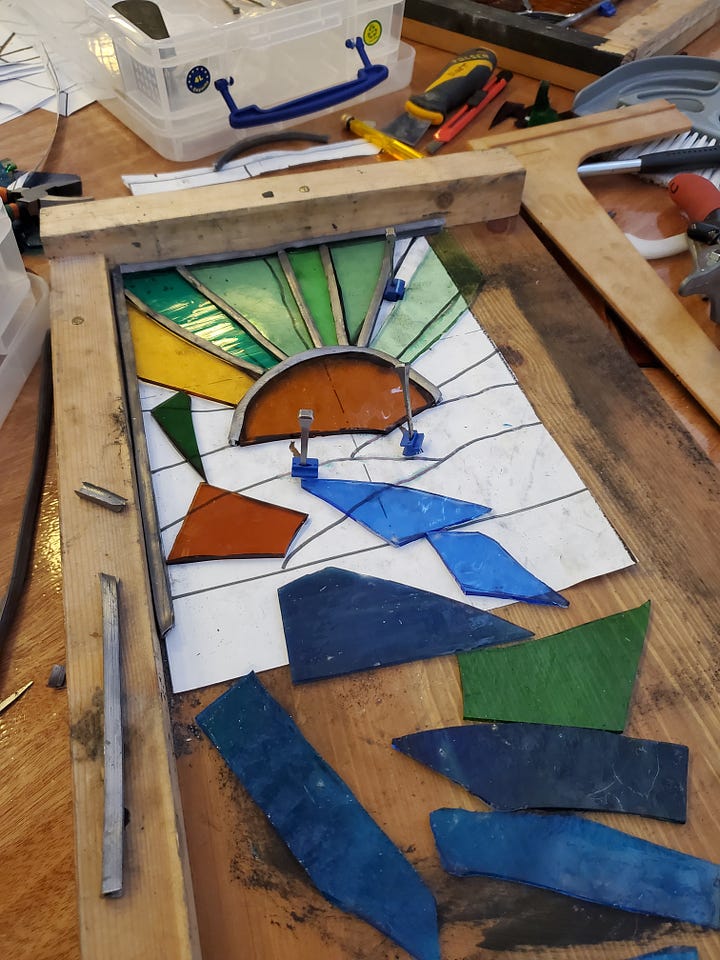
Digital Heritage Initiatives
Access to heritage extends far beyond physical spaces: Three AI initiatives are enabling people to experience heritage from anywhere:
UNESCO has been incorporating AI in the protection of cultural heritage globally. AI tools are being used to assist with everything from documentation and analysis of heritage sites to preventing illegal trafficking of cultural goods. These technologies have improved the speed and accuracy of indigenous data preservation efforts. More here.
HYPERION uses AI to monitor and protect European cultural heritage sites from climate-related risks as part of an EU-funded project. AI models detect structural changes in monuments, enhancing the assessment of damage and restoration planning. AI-powered drones and satellite imagery simplify the tracking of environmental threats like flooding, helping heritage sites endure extreme weather. More here.
FELO utilises cross-language AI search tools and translation services to enable researchers worldwide to collaborate on heritage projects. This AI technology helps heritage workers overcome language barriers and access valuable resources globally, facilitating international co-operation in the preservation of intangible cultural heritage. More here.
Trending Thoughts
The research conducted by Mauritshuis in the Netherlands has sparked significant interest and discussion on social media. The study found that viewing real art in a museum has 10 times the impact on the human brain than viewing reproductions. Researchers tracked the eye movements and brain activity of 20 volunteers as they observed five original artworks and their poster versions.
Vermeer’s Girl with a Pearl Earring received the most attention, with participants focusing on a "visual triangle" between the subject's eyes, mouth, and earring. Another piece, Honthorst’s The Violin Player, triggered a much stronger brain response, particularly in areas of the brain linked to self-reflection and personal memories.
These findings are compelling, though unsurprising. That said, from an inclusivity and diversity perspective, we think several factors remain unexplored, offering opportunities for future research:
In the brief selection criteria of the 20 participants, there was no explicit emphasis on ensuring diversity in terms of age, cultural background, education, or prior exposure to art, all of which could influence reactions.
With a focus on specific artworks, we cannot know whether these results can be generalised to other types, styles, or artists.
Comparing real art to physical posters overlooks the impact of increasingly relevant digital art experiences, such as virtual reality exhibitions.
The study measures immediate brain responses but does not assess the long-term effects of viewing real versus reproduced art, such as memory or emotional retention.
While quantifying brain responses and eye movements, the research does not account for subjective emotional experiences, which can vary significantly.
Comments on social media highlight the possible influence of the museum atmosphere, lighting, and environment on brain activity, which may contribute to the differences observed.
The study does not investigate how other genres or mediums (e.g., sculpture, abstract art) might evoke different responses.
The "visual triangle" for Vermeer’s painting fails to consider factors like composition, colour, and scale which might contribute to engagement in that particular area of the painting.
Could these aspects of the artwork, rather than its authenticity, explain the differences in engagement?
Upcoming Event(s): Blenheim Palace’s Spooky October
As Halloween approaches, Blenheim Palace promises to spook you throughout the month of October. The estate has made strides in accessibility with the installation of a new elevator, allowing everyone to enter through the front door for the first time.
This improvement is part of their broader commitment to equity and inclusivity, ensuring that all visitors can enjoy the site's historical and cultural offerings. Notably, the palace was recognised with an Accessibility Award at the Blue Badge Awards 2023. Check for specific accessibility provisions here.
The estate also offers free admission for companions of blue badge holders, welcomes assistance dogs, and provides various mobility aids, including wheelchairs and mobility scooters. Book your tickets here!
Web Weavings
Interesting heritage news from around the web…
Dark Tourism in War Zones: As conflict and tragedy continue to tarnish the landscapes of Israel and Ukraine, a growing number of visitors are drawn to these regions for "dark tourism." What does this growing trend reveal about our relationship with history and trauma? More here.
Typewriter Revival: At the University of Winchester, a nostalgic festival is bringing the clack of typewriter keys back to life. This unique celebration highlights the enduring appeal of typewriters and their resurgence in a digital world. Could digital fatigue be the reason why these analogue machines still captivate modern audiences? More here and here.
Scotland’s New World Heritage Site: The Flow Country, located in the northern Highlands of Scotland, is one of Europe’s most expansive blanket bog ecosystems, covering around 1,500 square miles. Recently recognised for its global significance and vital carbon sink, it stores vast amounts of carbon in its waterlogged peatlands. This “most intact and extensive blanket bog system in the world” attracts tourists and conservationists alike all year round. More here.
Thank you for reading! We’ll be back in November with more ways to access the world of heritage. Have a question, event or a story to share? Just reply to this email or reach out to clare@accessheritage.org.



